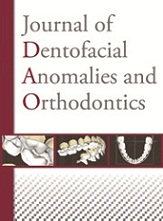No CrossRef data available.
Article contents
Morphofunctional aspects of clefts and their repercussions on growth
Published online by Cambridge University Press: 08 December 2011
Abstract
Over the last 50 years, the dominant conception of the etiology of facial clefts postulated that they resulted from a mesodermal deficit that accounted for the primary hypoplasia and the unpredictable nature of subsequent oro-facial growth. Because of this notion, rigid dogmatic interdictions, with no allowance for nuanced treatment adjustments were issued banning sub-periosteal and sub-perichondrial dissections as well as the undertaking of any nasal surgery during the growth period. These prohibitions have had a grave braking effect on the development of treatment for cleft lip and palate patients.
With a new comprehension of the important role that the dynamics of fetal ventilation plays in the development of the airways and its influence on maxillary growth researchers no longer have any doubt that normal growth mechanisms operating under abnormal anatomic conditions created by the cleft are the actual causes of the malformations and the facial growth deficit suffered by children born with clefts. It now seems likely that the nasal septum plays only a passive role in growth, as Moss believed, rather than the active one that Scott as well as Delaire defined, calling it the driving force of maxillary development. They advocated re-inserting the lateral muscles on the anterior nasal spine. But practitioners who limit their functional approach to this procedure risk being deceived. In addition this focusing on muscles distracts us from what is essential, nasal ventilation, whose rehabilitation beginning with the first operation and preservation throughout treatment are absolutely necessary to ensure the normal unfolding of a cleft palate patient’s facial growth.
To achieve this goal surgeons must complete anatomic reconstruction with precisely timed, ambitious surgery carefully designed to control scar formation. Whether their procedure is unilateral or bilateral surgeons make this correction of the nasal malformation best if they operate when patients are six months old and close the lip defect at the same time. During this procedure surgeons close the soft palate defect using the Sommerlad technique taking advantage of the shrinking of the hard palate gap that closes enough to allow for simple, complete surgical elimination of the cleft in two layers without leaving dense scar tissue or denuded areas. By the time patients are 4 years old orthodontists have expanded the anterior maxilla to establish good canine function and surgeons can close the alveolar cleft with a gingivoperiosteoplasty and an iliac graft. Each procedure conserves the width of the piriform orifice, the nasal fossae and the anterior, incisor-canine sector of the arch. Nasal ventilation, as well as symmetrical, centered mastication, is required for normal facial growth.
- Type
- Research Article
- Information
- Journal of Dentofacial Anomalies and Orthodontics , Volume 14 , Issue 3: Labio-maxillary-palatal clefts , September 2011 , 305
- Copyright
- © RODF / EDP Sciences


